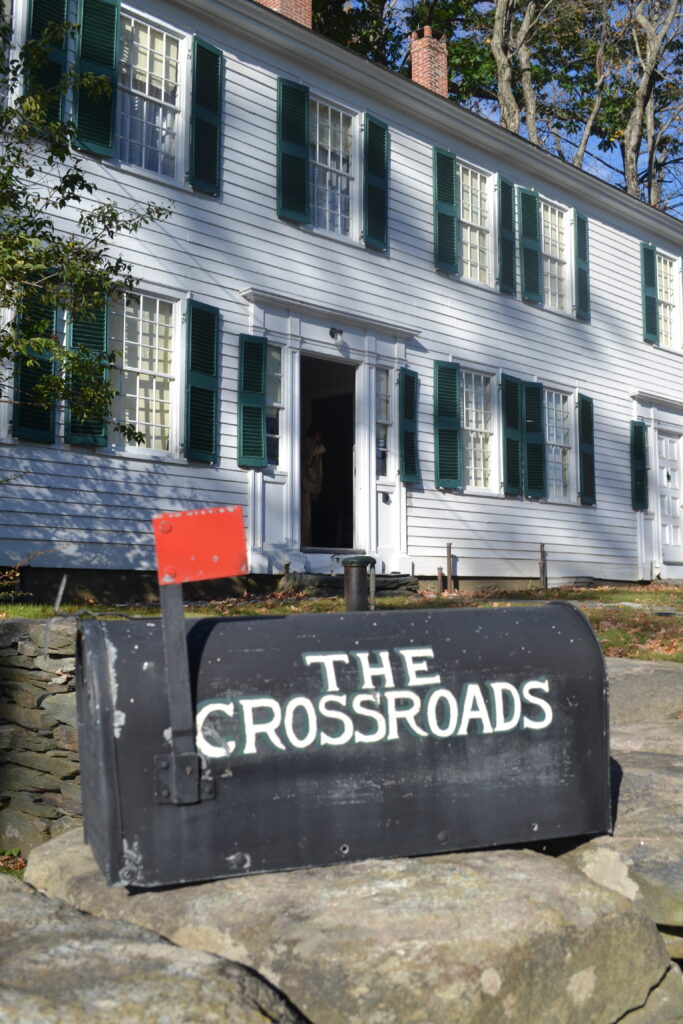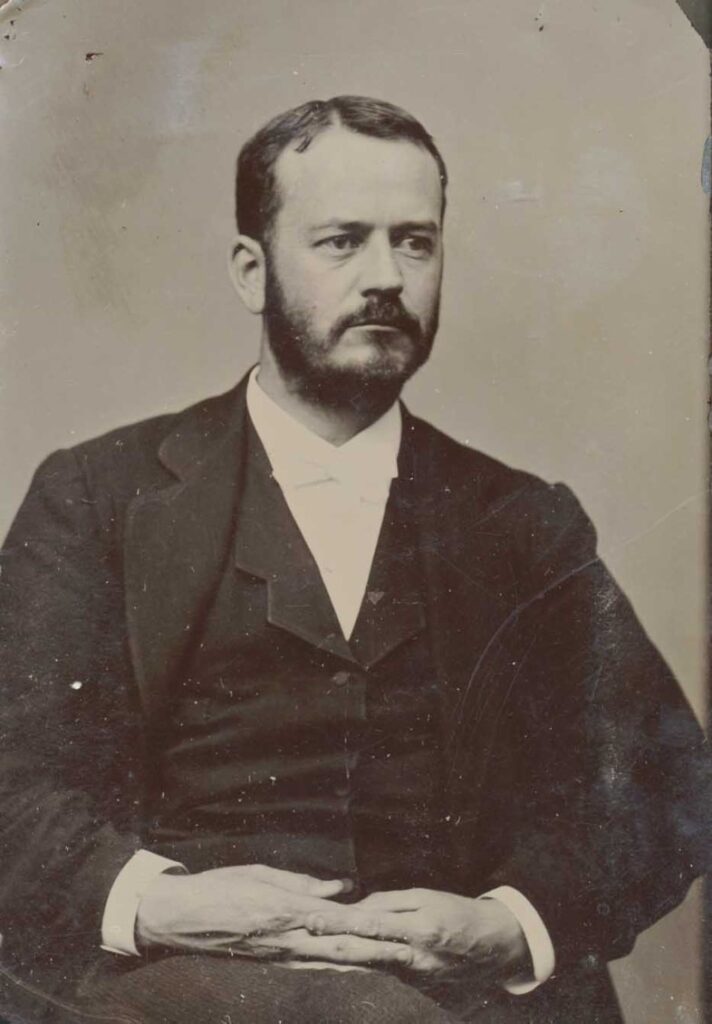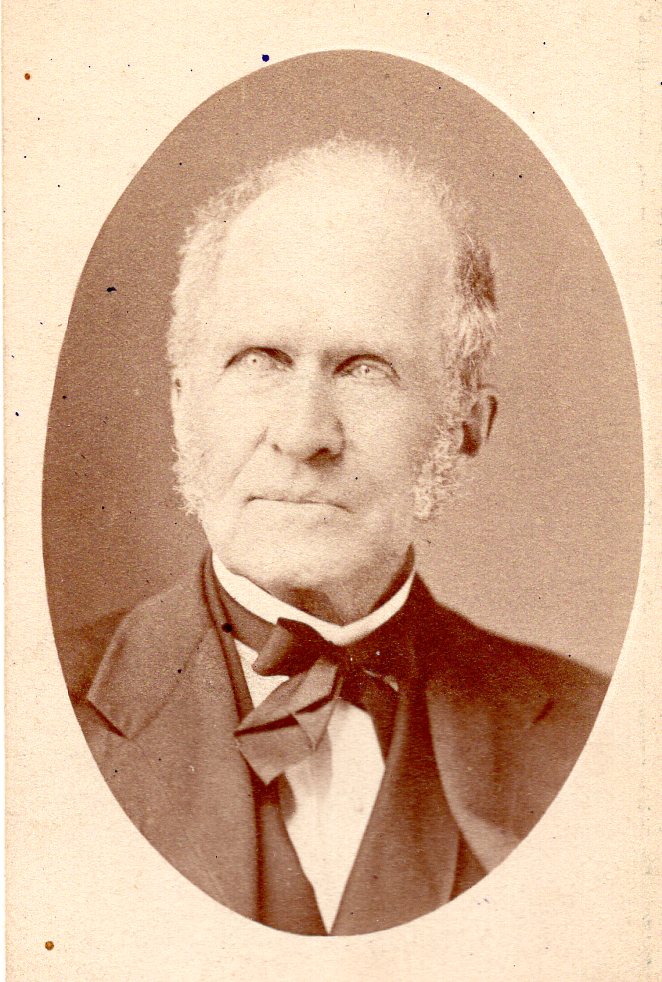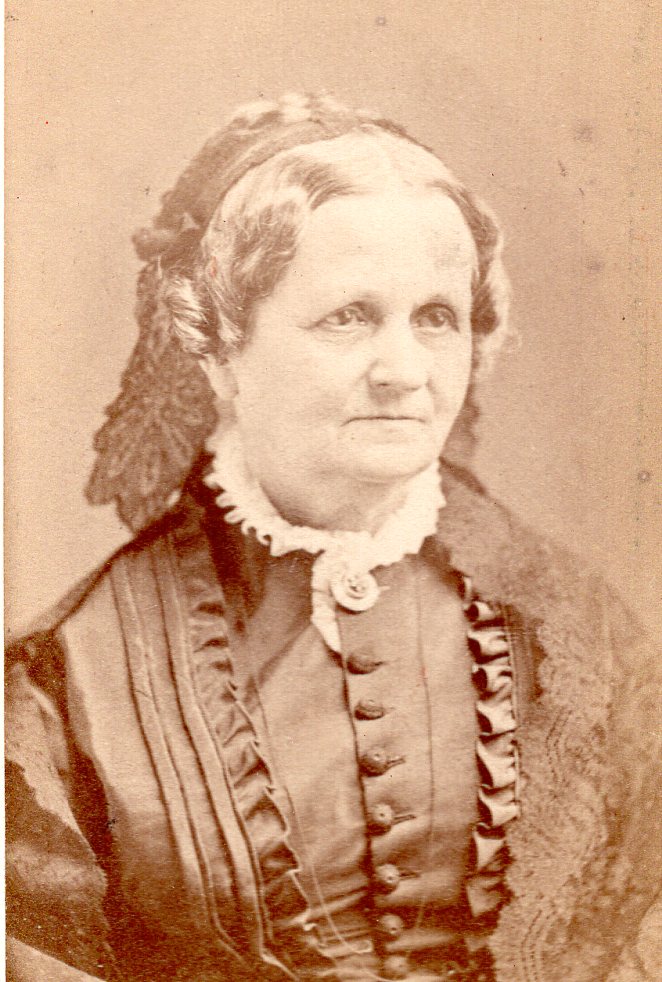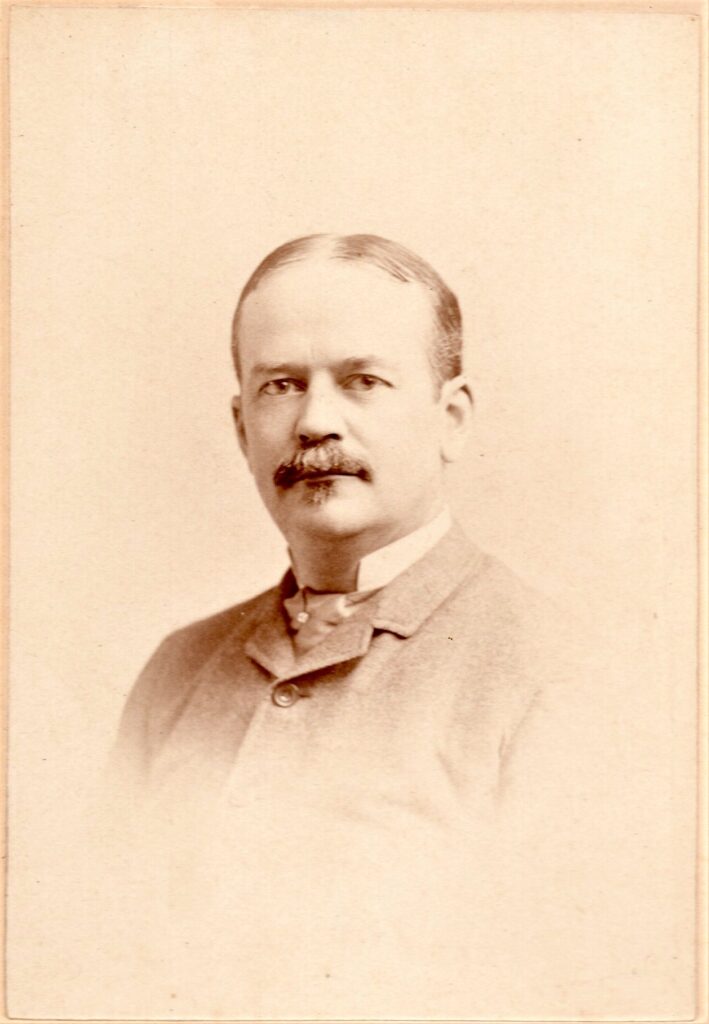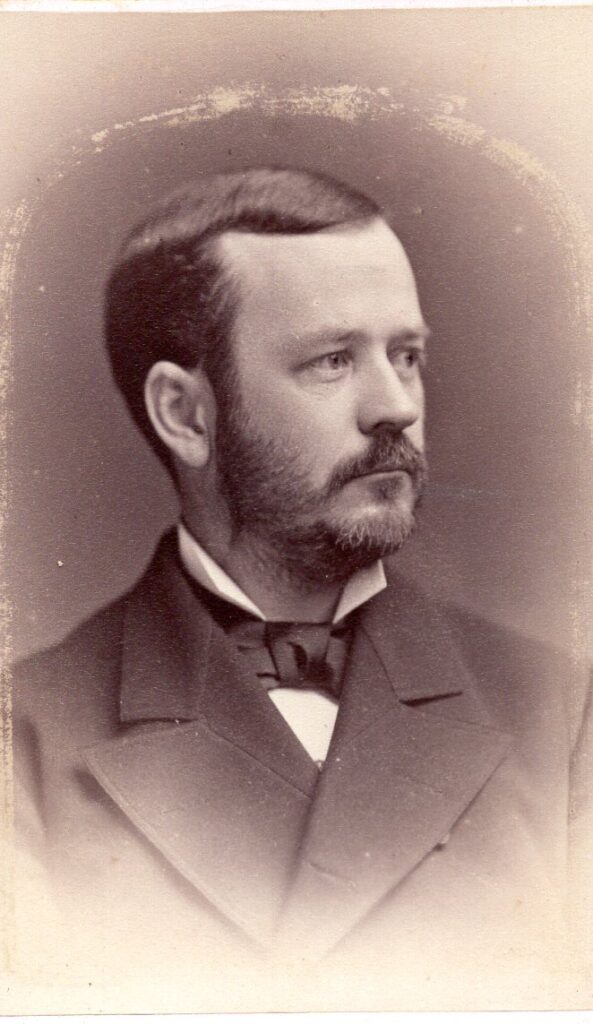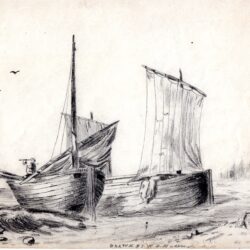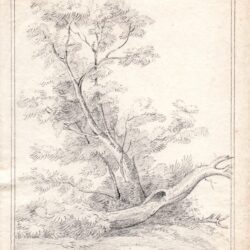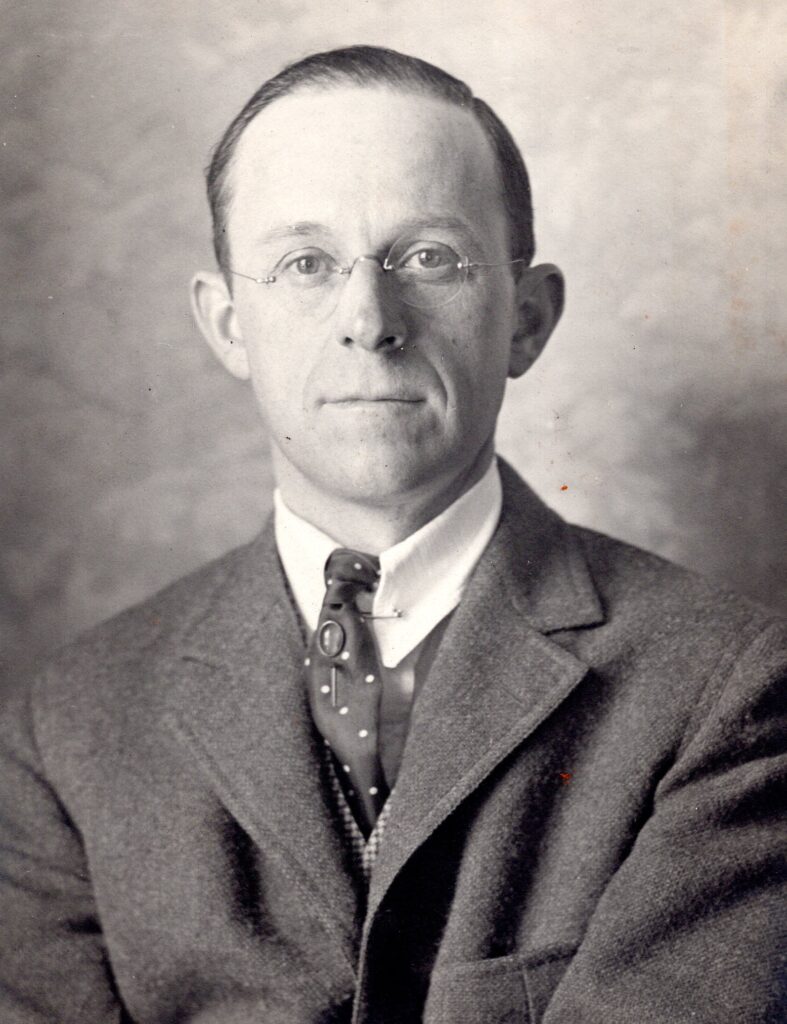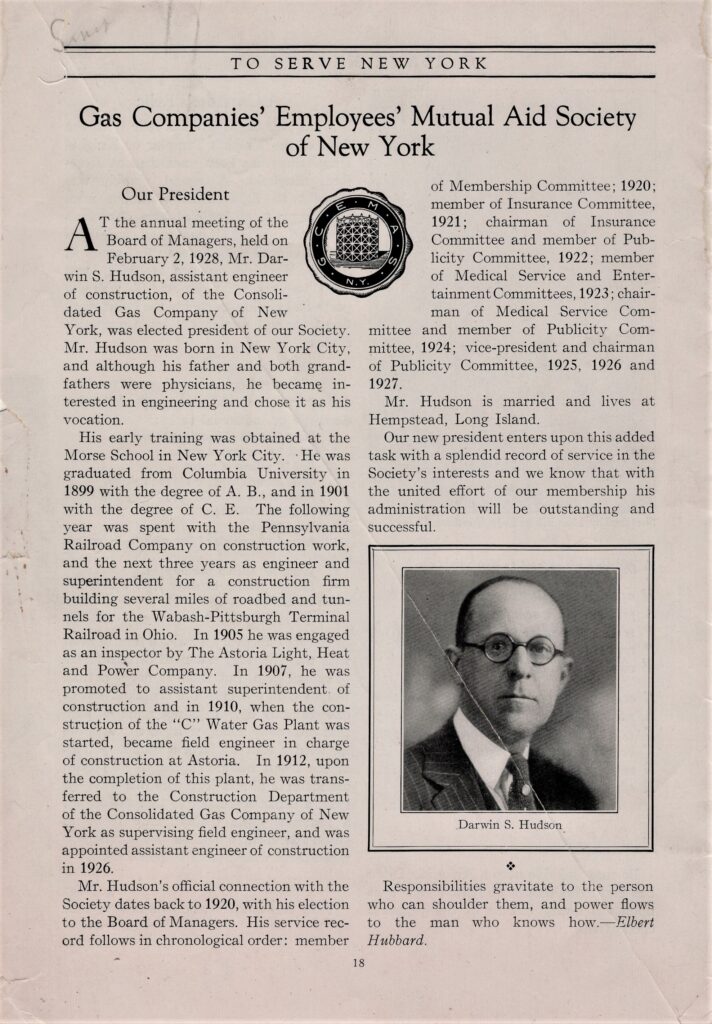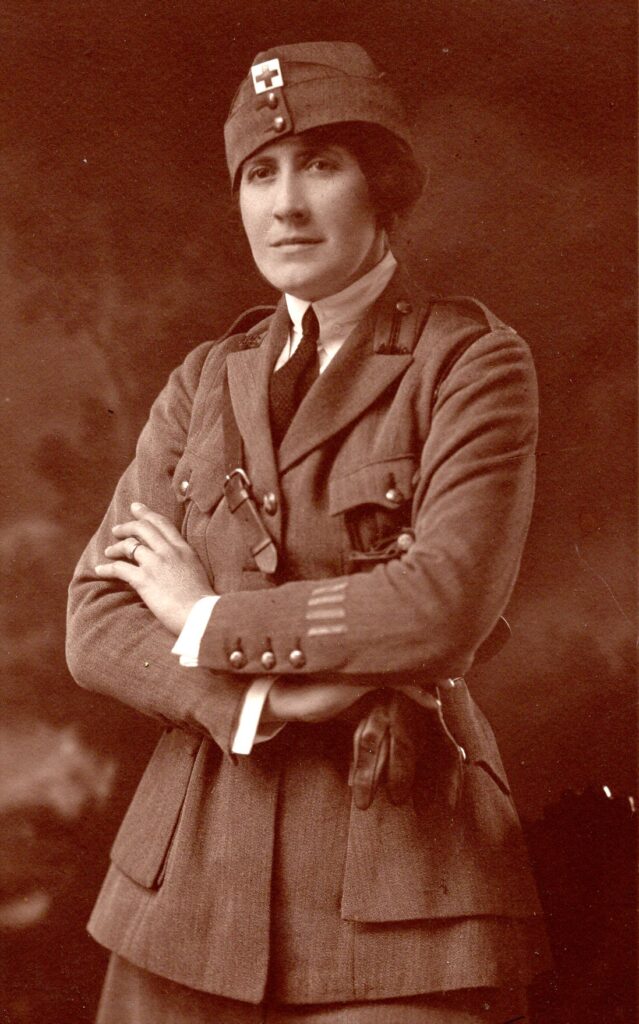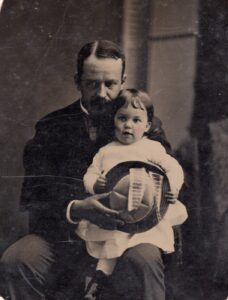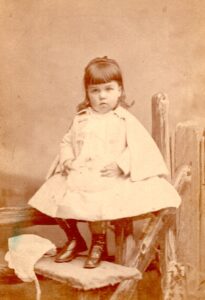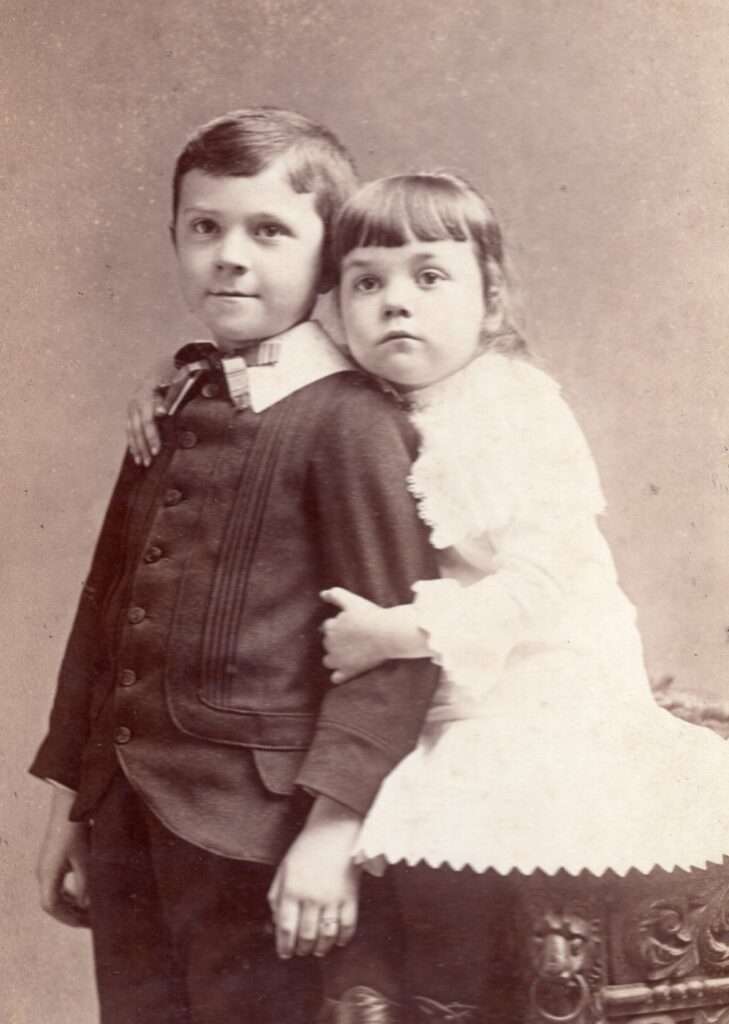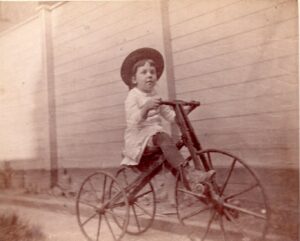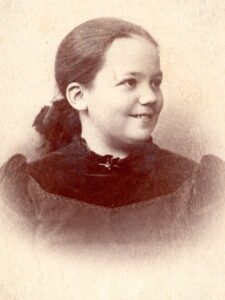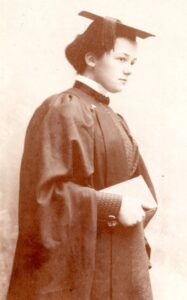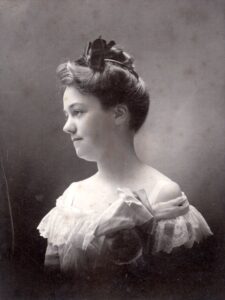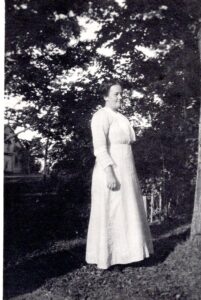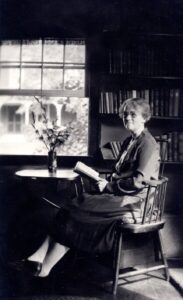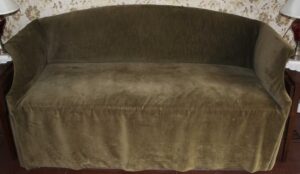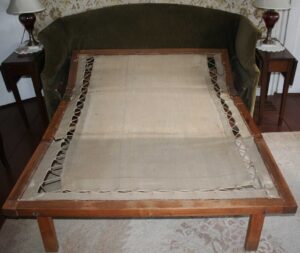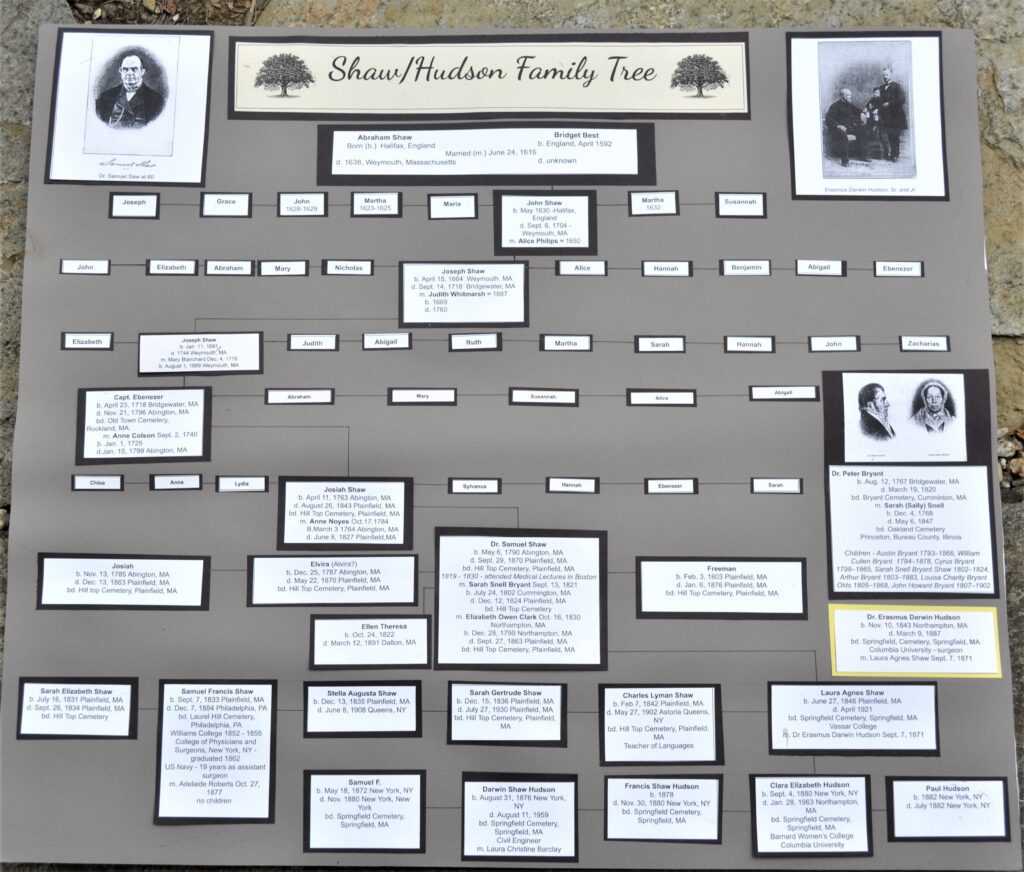Hudson Family Members
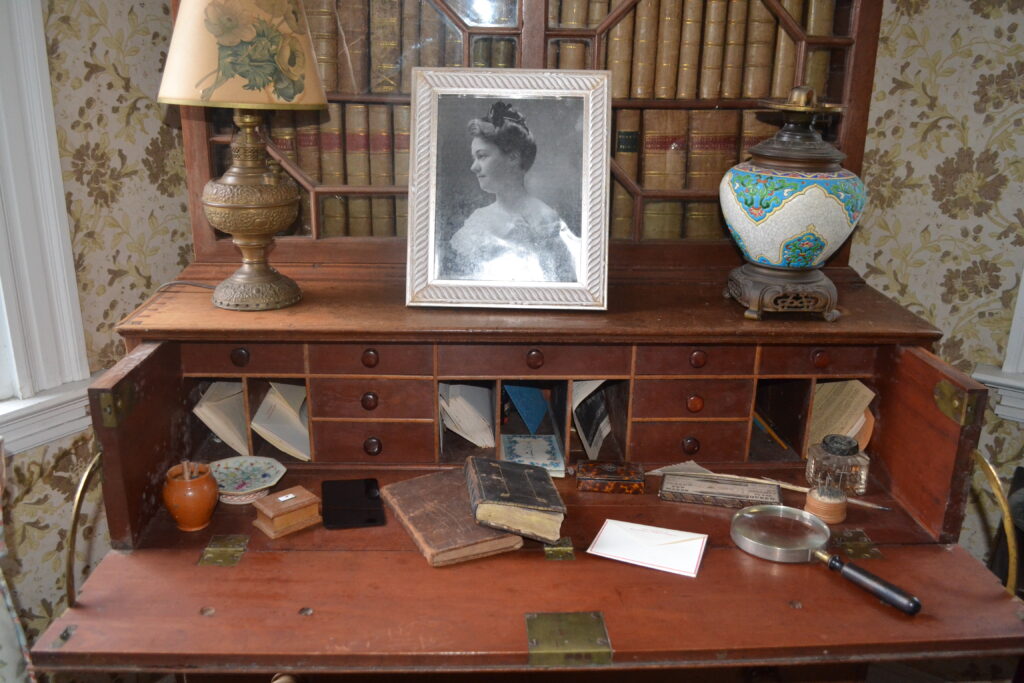
When Laura Shaw married Dr. Erasmus Darwin Hudson they expanded their circle of family members and acquaintances further into the world of late 19th and early 20th century sciences and medicine. The Hudsons, a prominent family from New York City, had many members in the medical profession, whom made important contributions to the field. The Shaw-Hudson House contains many of the letters, journals, drawings, and other ephemera from family members.
As the house sits at the corner of Main Street and Central Street it became known as “The Crossroads” with the family even using this address on their mailbox, letterhead, and cocktail napkins. The Hudsons, in particular, were prolific letter writers, and the University of Massachusetts and Smith Collège hold many of their letters. Let’s meet the Hudson family members that frequented the Shaw-Hudson house.
The following are excerpts on Clara Elizabeth Hudson’s father, Dr. E. Darwin Hudson, taken from The Romances of a Country Doctor, a paper read at the annual meeting of the Northampton Historical Society at the Unitarian Church, Northampton, on October 7, 1947 and from Plain Tales from Plainfield or The Way Things Used to Be, written in 1962. Ms. Hudson was a granddaughter of Dr. Samuel Shaw and the last surviving relative to live in the Shaw Hudson House.
Click on photographs for an enlarged view. All blue text is a hyperlink to more information.
“It was after my father, Dr. E. Darwin Hudson Jr., a New York City physician, died on May 10, 1887, that my uncle, (Charles Shaw) tired of boarding, persuaded my mother to join him in buying the house in Astoria. This house was large enough to accommodate my uncle, my mother, my brother (the only living one of my four brothers) and myself – and in the winter my two single aunts, the Misses Stella and Sarah Shaw. These aunts spent most of the year in the Plainfield house. They were older than my uncle, my mother being the youngest of the four sisters.
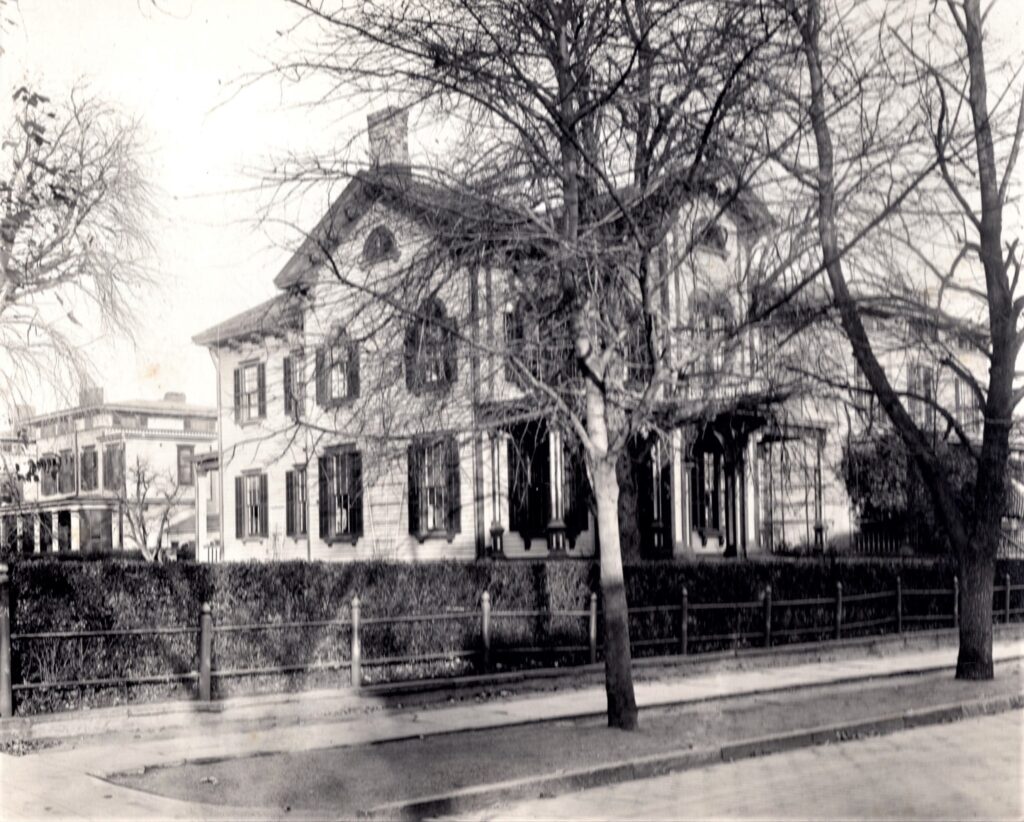
The new purchase on a pleasant residential street in Astoria (157 Franklin Street) was a cream-colored frame house with white trimmings. The brick lining made it warm in winter and cool in summer. My uncle’s schoolroom was on the ground floor, reached by the driveway and the back porch. He taught some dozen or fifteen boys and myself.
When mother, my brother Darwin and I moved to Astoria, my brother continued commuting to the New York private school where he had begun. I was not yet seven years old. To attend the nearest public school I should have had to go through a rather rough section of Astoria. So my uncle said he would try me as a pupil. If I didn’t make any trouble I could stay. I stayed.“
“My Astoria friends were wholesome, but my mother thought them rather light-weight and was anxious for me to add some outside acquaintance.”
Dr. Erasmus Darwin Hudson, Sr. – 1806-1880
Dr. E. D. Hudson, Sr ((1825-65), Clara Hudson’s grandfather, was born in Torringford, Connecticut (Now part of Torrington) in 1806, and educated at the Torringford Academy and Berkshire Medical College (MD, 1827), Erasmus Darwin Hudson, Sr. became well known as a radical reformer.
In an introduction to the Hudson Papers Collection housed at the University of Massachusetts, it states, “Spanning five generations of a family of physicians and social reformers, the Hudson Family Papers include particularly significant content for Erasmus Darwin Hudson Sr. documenting his activities with the Connecticut and American Anti-Slavery societies. Hudson’s journals and writings are accompanied by a rich run of correspondence with antislavery figures such as Abby Kelley, Wendell Phillips, Frederick Douglass, William Lloyd Garrison, Isaac Hopper, and Samuel May and a unique antislavery campaign map of New York state and surrounding areas (1841). Hudson’s medical career and that of his son Erasmus Darwin Hudson, Jr. (1843-1887), a thoracic physician, is equally well documented through correspondence, medical notes, and handwritten drafts of lectures, with other material ranging from family records and writings of and other family members to genealogies of the Hudson, Shaw, Clarke, Fowler, and Cooke families, and printed material, memorabilia, clipping and photographs.
A thorough reformer in the nineteenth century mode, Erasmus Darwin Hudson, Sr. (1806-1880) was a pioneering orthopedic surgeon, temperance advocate, anti-slavery organizer, and agent for the Connecticut and American Anti-Slavery Societies. The eldest of four children of Daniel Coe Hudson and his wife Rhoda (Fowler), Hudson was born in Torringford (now part of Torrington), Conn., on Dec. 15, 1806. Educated by private tutor and at the Torringford Academy, he began the study of medicine under Remus M. Fowler of New Marlboro, Mass., in 1823, before taking his medical degree at the Berkshire Medical College (a branch of Williams College) in 1827.
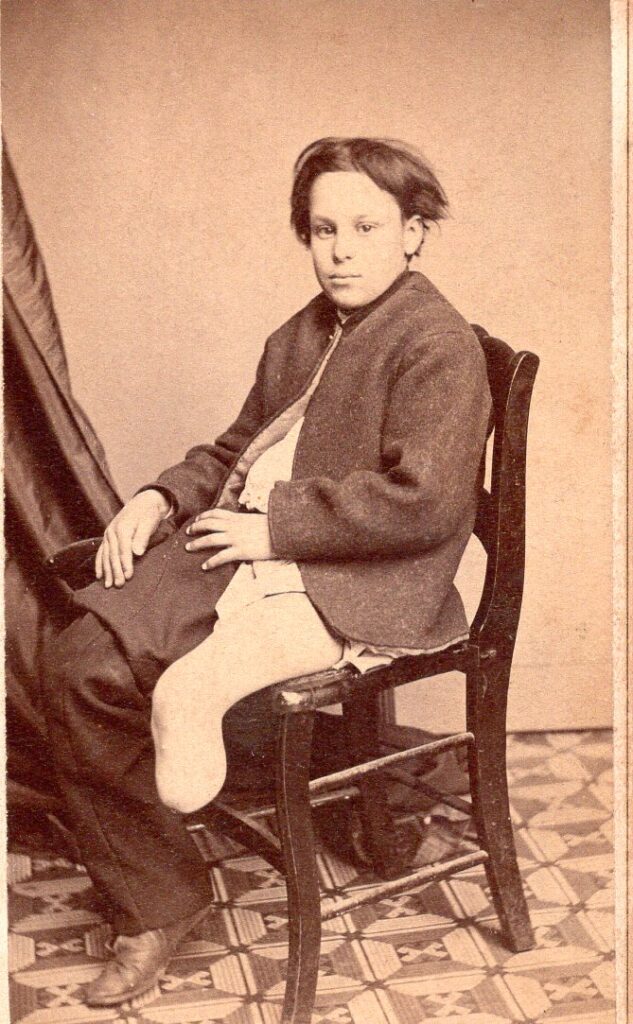
While establishing his medical practice in Bloomfield, Conn., and later in Springfield, Mass., and New York City, Hudson emerged as a force in the antislavery struggle, hewing to the non-resistant line. Touring the northeastern states as a lecturing agent for the Connecticut Anti-Slavery Society and general agent of the American Anti-Slavery Society, he regularly contributing articles to an antislavery periodicals and befriended many of the movement’s leaders. In his professional life as an orthopedic surgeon, Hudson earned acclaim for his contributions to the development of modern prosthetics. During the carnage of the Civil War, he introduced remarkable improvements in artificial limb technology and innovations in the treatment of amputations and battle trauma, winning awards for his contributions at international expositions in Paris (1867) and Philadelphia (1876).
“Despite such intense commitments to reform and a brief interlude as co-principal of a boarding school in Torringford with Rev. Epaphras Goodman (1833-1837), Hudson continued to grow as a medical professional. From Bloomfield, he went on to a position at the Connecticut State Emigrant Hospital and became active in the Hopkins Medical Association, the Hartford County Medical Society, and the Connecticut Medical Society. After stepping back from antislavery touring in 1850, he began to specialize in general and orthopedic surgery, first in Springfield, Mass., and then after 1855, in New York City. Orthopedics became his claim to fame.”
“Noted for his work in prosthetics, Hudson earned a commission from the Surgeon General to care for wounded soldiers requiring amputation and resection at the military hospital at Central Park in New York City and other hospitals. Becoming well known as an inventor of orthopedic apparatus, he contributed a number of related surgical reports to the United States Sanitary Commission and received awards for his innovations at the Exposition Universelle in Paris, France, in 1867, and at the Centennial Exposition in Philadelphia, 1876. Among his other publications were case studies that appeared in the Medical and Surgical History of the War of the Rebellion (Washington, 1870-1872) and monographs on Resections (New York, 1870), Syme’s Amputation (New York, 1871), and Immobile Apparatus for Ununited Fractures (New York, 1872). The husband of Martha Turner, whom he married in 1828, Hudson died of pneumonia on Dec. 31, 1880, at his home in Greenwich, Conn.”
Dr. Hudson and his wife, Martha Turner Hudson (1806-1887), had three children: Romulus Fowler Hudson (1828- 1906), Daniel Wyatt Hudson (1833-1855), and Erasmus Darwin Hudson (1943-1887).
Dr. Erasmus Darwin Hudson Jr. 1843-1887
Clara Hudson was both a maternal and paternal granddaughter of, as well as a daughter of well-known physicians. As William Hosley writes, “This House (Shaw- Hudson House) has more layers than an onion and every layer is fascinating.“ Dr. Samuel Shaw’s daughter Laura attended the Rutgers Female Institute in New York where she met and married Erasmus Darwin Hudson Jr., a doctor who was educated at Columbia University. The Hudson’s lived an affluent life in Astoria in New York, just across the East River from Manhattan but summer times were always spent in Plainfield. Many of their possessions can still be found in the Shaw Hudson house.”
E. Darwin Hudson, Jr. was born November 10, 1843, in Northampton, MA, to orthopedic surgeon and abolitionist Erasmus Darwin, Sr. and Martha Turner Hudson. In 1855 he moved with his family from Massachusetts to New York City. He graduated from the College of the City of New York in 1864, and at the New York College of Physicians and Surgeons in 1867. He was the house surgeon of Bellevue Hospital in 1867 to 1868, and held the office of health inspector of New York City in 1869 to 1870. In 1870 he was attending physician to the class for diseases of the eye of the outdoor department of Bellevue Hospital, and from 1870 until 1872. Dr. E. Darwin Hudson Jr. was then the attending physician at the Northwestern Dispensary.
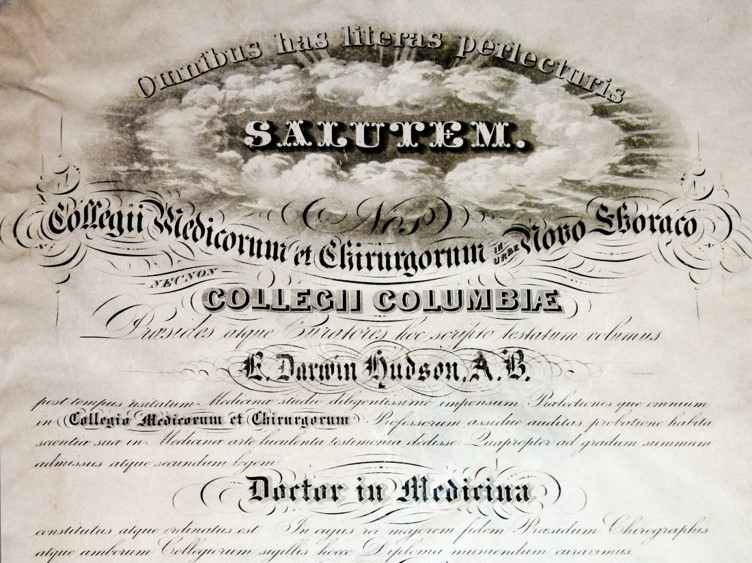
Dr. Erasmus Darwin Hudson’s diploma from Columbia College. Property of the Shaw-Hudson House collections
He was professor of principles and practice of medicine in the Woman’s Medical College of New York infirmary from 1872 until 1882, and professor of general medicine and physical diagnosis in the New York Polyclinic from 1882 until his death. From 1870 until his death, he was also attending physician to Trinity Chapel parish and Trinity Home.
Below is a timeline of just a few of his many accomplishments
1867 Received M.D. from Columbia University’s College of Physicians and Surgeons.
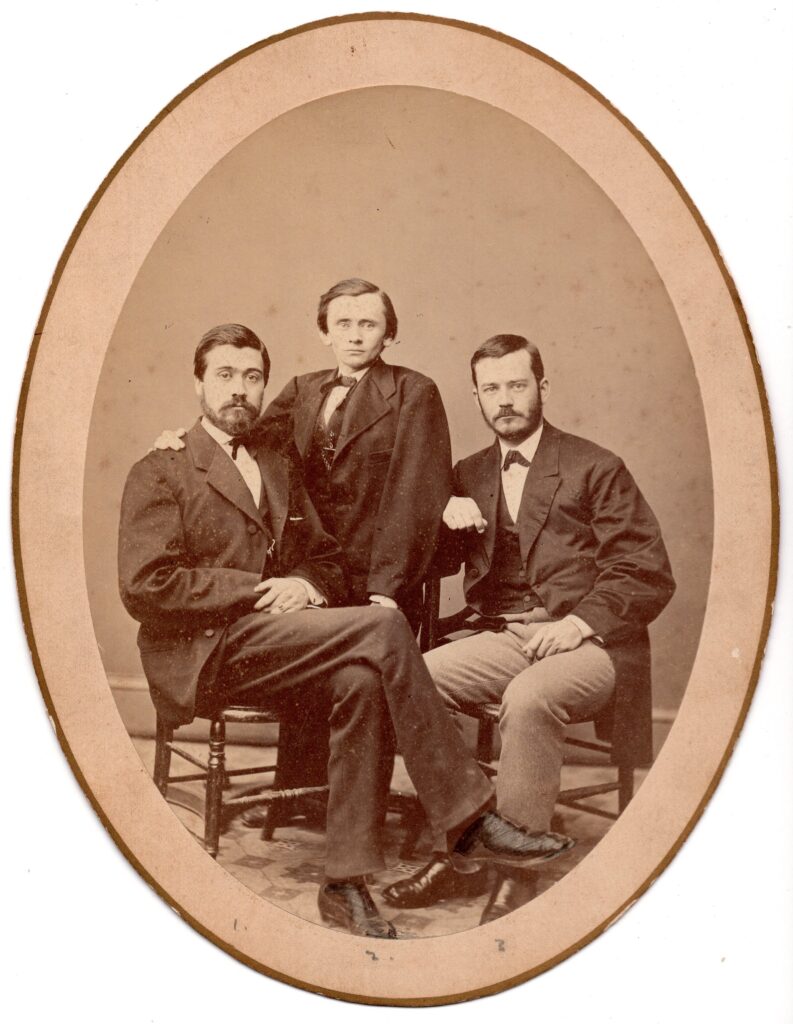
1867-1868 House surgeon, Bellevue Hospital, and private practice, New York City
1870-1880 Attending physician, Bellevue Hospital, Trinity House, and Trinity Chapel Parish; professor, Women’s Medical College of the New York Infirmary; consultant to other physicians.
1871 Married Laura Shaw, daughter of Dr. Samuel and Elizabeth Clarke Shaw of Plainfield, MA
1880-1887 Professor, New York Polyclinic; attending physician Bellevue and St. Elizabeth’s Hospital, New York City; librarian and member of the Library Committee, New York Academy of Medicine; chairman, Ethics Committee, Medical Society of the County
1887 Died of pneumonia May 9 in New York City
Below is an obituary written by a close friend and colleuge, D. M. Cammann, M.D. 1869-1870 Health Inspector, New York City.
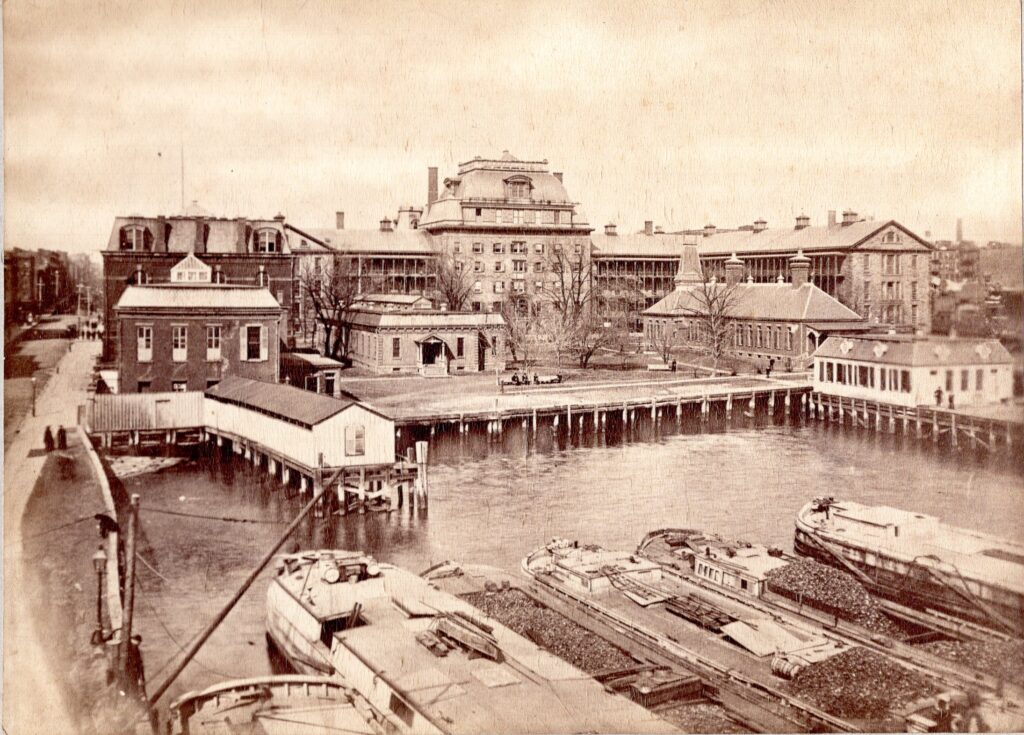
“On May 9, 1887, Dr. E. D. Hudson, Jr., a member of the Council and an active worker in the Association, died of pneumonia after a few days illness He was born at Northampton, N. Y., in 1843. In 1867 he was graduated from the College of Physicians and Surgeons, New York, and subsequently entered Bellevue Hospital, spending the usual time as interne in that institution. At the time of his death he was Professor of General Medicine at the New York Polyclinic and Visiting Physician to Bellevue Hospital and St. Elizabeth’s Hospital. He was a member of the Academy of Medicine, of the Medical Society of the County of New York, of the Pathological Society, and of the New York Physicians’ Mutual Aid Association.“
“Formerly, as Professor of the Practice of Medicine in the Women’s Medical College in New York, and later in his Professorial Chair at the Polyclinic, as well as the Societies of which he was a member, he was an active and untiring worker. After many years of persistent labor, he was beginning to reap the reward in a remunerative practice which was to a large extent consulting.”
“Dr. Hudson was not a voluminous contributor to medical literature, but what he did was done well, and his papers bore evidence of careful research and accurate observation. His book on Physical Diagnosis, which appeared after his death, is a model of brevity and conciseness without the sacrifice of clearness and fulness.”
“Space will not permit me to consider at length the circumstances of his life, but his character was in some respects worthy of study. If he had genius, it was the genius of hard work and persistent endeavor. To the consideration of any question with which he had to do he brought the calmness which showed no lack of force but rather the control of a well-balanced mind. When a man of full years and whose life-work must necessarily be nearly done is called away, however much we may miss him, we yet feel that the laws of nature have but had their course. But when one in the prime of life dies, whose labors are just receiving recognition and whose future holds out the bright promise of reward, it is a sad reflection and tinged with bitterness that he should be so suddenly taken away.”
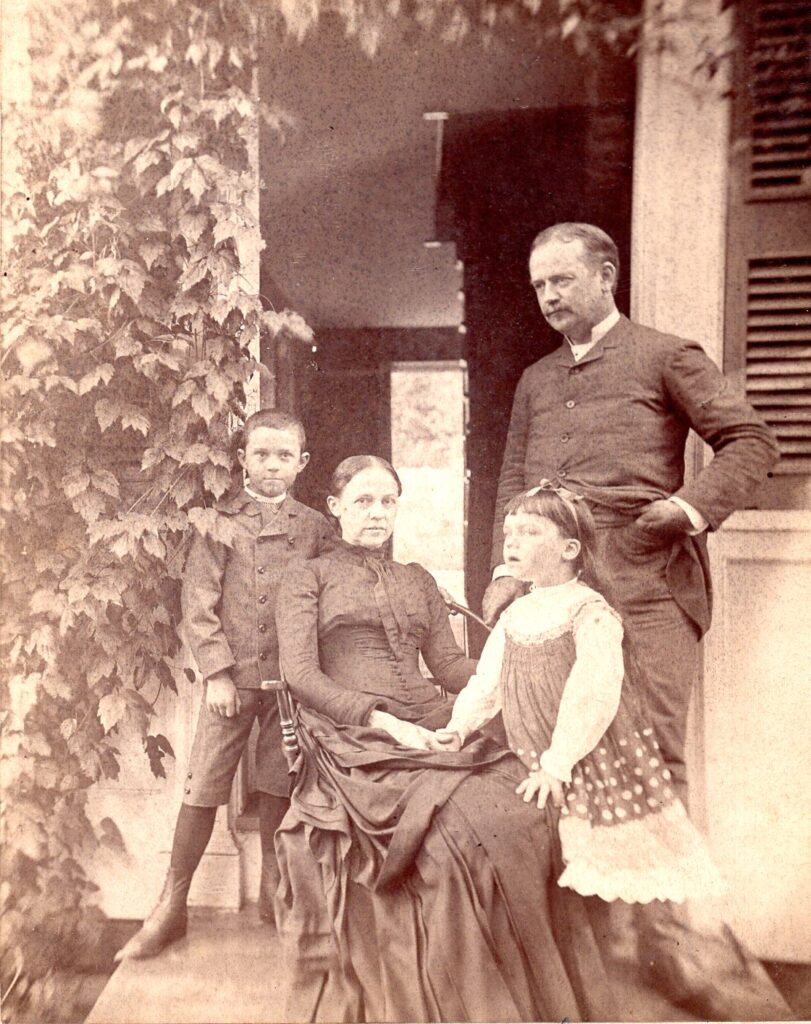
Darwin Shaw Hudson 1876 – 1959
Born August 31, 1876 Darwin Shaw Hudson was the first child of Dr. E. Darwin Hudson and Laura Shaw Hudson. He spent his summers at the Shaw-Hudson house and winters in Astoria, New York.
“Dar” as he was referred to, spent most summers in Plainfield, and he and sister, Clara, seemed to have had no problem transitioning between their urban-life in Astoria, New York and rural-living in Plainfield.
Darwin attended Columbia University, studying engineering. While there he was the manager of the Columbia University Wheelers bicycle club in 1898 and 1899. He also was an active member of the Alpha Delta Pi fraternity.
Upon graduation from Columbia he attended SUNY (State University of New York) and graduated with a degree in civil engineering in 1924. He went on to practice civil engineering for the Consolidated Edison Gas Company of New York. In 1928 he was elected president of the Gas Company’s Mutual Aid Society of New York.
On October 4, 1906, he married Laura Christine Barclay at Saint Mary’s Church in Burlington, New Jersey. They had no children.
Records indicate that in June of 1934, Darwin and his wife sailed to Bermuda for an extended vacation. Little else is written about their life together, but we do know that both Smith College and University of Massachusetts libraries hold an extensive collection of the Hudson family letters, so more research is needed. We do know that Darwin remained close to his sister, Clara, and continued to spend summers in Plainfield. Many of his items still remain in the Shaw-Hudson homestead.
In August of 1959, after a brief illness, Darwin Shaw Hudson died in Peabody, MA and is buried in Springfield, Massachusetts.
.
Laura Christine Barclay Hudson 1884 – 1954
Laura Christine Barclay was the wife of Darwin S. Hudson. She was born in Stuebenville, Ohio, the daughter of J. Mortimer and Mary Warner Barclay. Ms. Barclay attended the very fashionable Miss Mason’s School, known as “The Castle” in Tarrytown, New York. The Shaw Hudson collections holds a notebook on “domestic science” that Ms. Barclay kept, showing an early interest in medicine.
During World War I Ms. Barclay was a lieutenant of the Motor Corps and chairman of the Disaster Relief of the American Red Cross in Nassau County, Long Island. For years she served as treasurer of the Altar Guild of the Protestant Episcopal Cathedral of the Incarnation in Garden City, Long Island.
She spent many summers at “The Crossroads” in Plainfield, Massachusetts and died on October 2, 1954, at the age of 70 years old at Colley-Dickenson Hospital in Northampton, MA. She is buried along with her husband in the Springfield Cemetery.
It is obvious that Ms. Hudson visited the Shaw-Hudson house, as many of her possessions are still in the home.
Clara Elizabeth Hudson 1880 – 1963
Clara Elizabeth Hudson (1880-1963) was a community leader and the last of the Hudsons. Her papers, 1923-1951, and her book of family and local history, Plain Tales from Plainfield, provide several important links within this diverse collection. Clara Elizabeth Hudson was born in New York City, New York on September 4, 1880 to Dr. Erasmus Darwin Hudson and Laura A Shaw Hudson, daughter of Dr. Samuel Shaw. Her early education was at home by her uncle, Charles Lyman Shaw.

She writes of her early education, “To my uncle, Charles Lyman Shaw, I owe much of my interest in factual books. Until I went to Barnard College in New York City he was my only schoolteacher, and an excellent one. I have never attended either grade or high school, and until I went to college I had never been in classes with girls. Reciting in a class of fifty girls often brought tears of nervousness to my eyes, whereas reciting with a dozen or more boys hadn’t disturbed me at all.
When mother, my brother Darwin and I moved to Astoria, my brother continued commuting to the New York private school where he had begun. I was not yet seven years old. To attend the nearest public school I should have had to go through a rather rough section of Astoria. So my uncle said he would try me as a pupil. If I didn’t make any trouble I could stay. I stayed.
I entered college a year before I had expected to. My Astoria friends were wholesome, but my mother thought them rather light-weight and was anxious for me to add some outside acquaintances.
Several of the boys in our “crowd” were preparing for college but I was the only girl. So mother and I called on the dean of Barnard. She advised my taking the preliminary examinations. I failed in Greek but passed it a year later and entered college without any conditions.“
Clara Elizabeth Hudson was born in New York City on September 4, 1880. She spent her summers in Plainfield and the rest of the year in New York. Schooled at home until her teens, as she mentioned, Clara went on to attended the Astoria Latin School in Astoria, Long Island, a college preparatory school. From 1906 to 1907 she studied at the Teachers College of New York. She then went on to Barnard College, Columbia University, where she studied “household” chemistry, graduating in 1911.
Upon graduation, Clara moved to Northampton, Massachusetts, living on Cottage Street. Clara was an active community member, both in Northampton and Plainfield. In Plainfield, she was Guardian of the Hilltop Camp Fire Girls of America, was a supporter of the Plainfield Library, playing a pivotal role in raising funds for the Shaw Memorial Library, worked to bring medical and dental care to local children, and served on multiple boards and committees.
In Northampton, Ms. Hudson was an active participant in many community activities. She was a devoted member of the Unitarian Church, a volunteer social worker, and associate director of the Children’s Home Association. She also volunteered at Smith College, taking students on local field trips. Ms. Hudson was the oldest member of the Northampton Girl Scouts, having registered in 1920, and served as the commissioner from 1921 to 1923.She was director of the Hampshire County Red Cross from 1930 to 1956, representing five of the local hilltowns. she was also chairperson of the HCRC Nurses aides, from 1941 to 1946.
As if this wasn’t enough, Ms. Hudson was also a member of the Northampton Women’s Club, the Daughter’s of the American Revolution, and the League of Women’s Voters.
Clara Hudson traveled widely around the United States, usually in pursuit of science related events, even venturing to Arizona to visit the new Lowell telescope.
During the last two year’s of her life, Ms. Hudson devoted much of her time to writing her memories of life in Plainfield. Her book of reminiscences, Plain Tales from Plainfield, is a valuable preservation of local history that may otherwise have been lost, and was the inspiration for this virtual tour of her family homestead, the Shaw-Hudson House. There were only 200 copies of this book printed, with Ms. Hudson donating seventy-five copies to the Northampton Historical Society, now Historic Northampton, with all proceeds going to the work of the society.
Clara Elizabeth Hudson died May 2, 1963 at the age of 82 and is buried, along with her Hudson family members, in the Springfield Cemetery. She never married nor did she have any children.
Ms. Shaw was the last surviving member of the Shaw and the Hudson families, and thus, with no heirs, left the Shaw-Hudson house and all its contents, in a trust, currently held by the Greenfield Savings Bank, and is managed by the Plainfield Congregational Church. The house has been preserved as she left it and is now the centerpiece of Plainfield Center.
Photographs of Clara Elizabeth Hudson
All photographs are the property of the Shaw Hudson Collections
Photographs of Interesting Items from the Shaw Hudson House Parlor
The Shaw-Hudson dining room holds many of the Shaw’s and Hudson’s papers, as well as some very interesting locally made pieces of mid-19th century furniture.
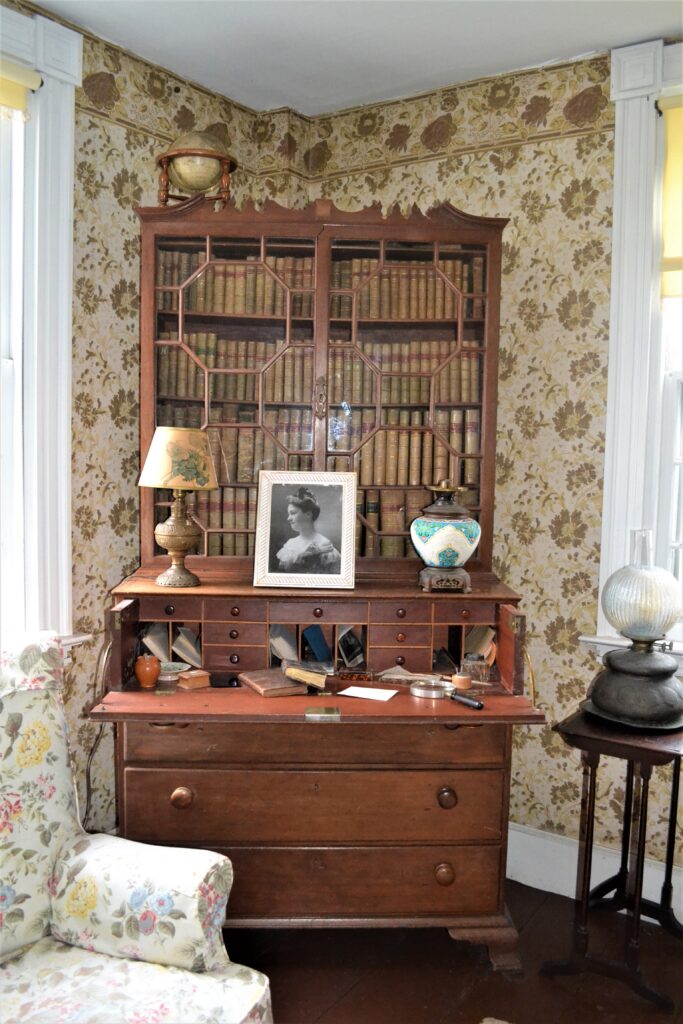
Family writing desk 
Photograph of Clara Hudson 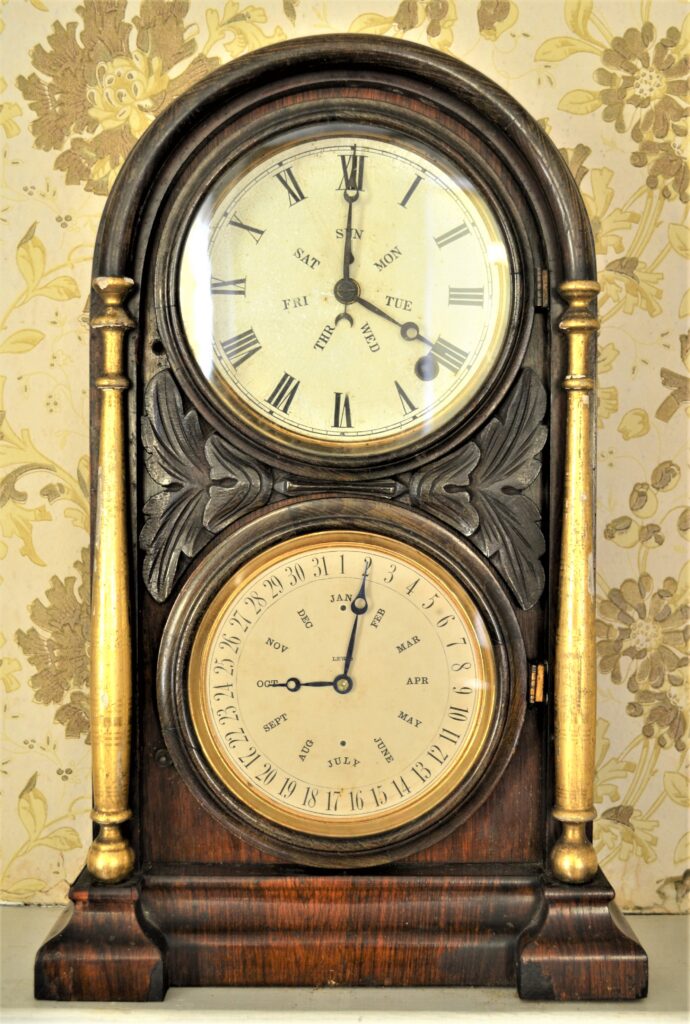
Mantel clock 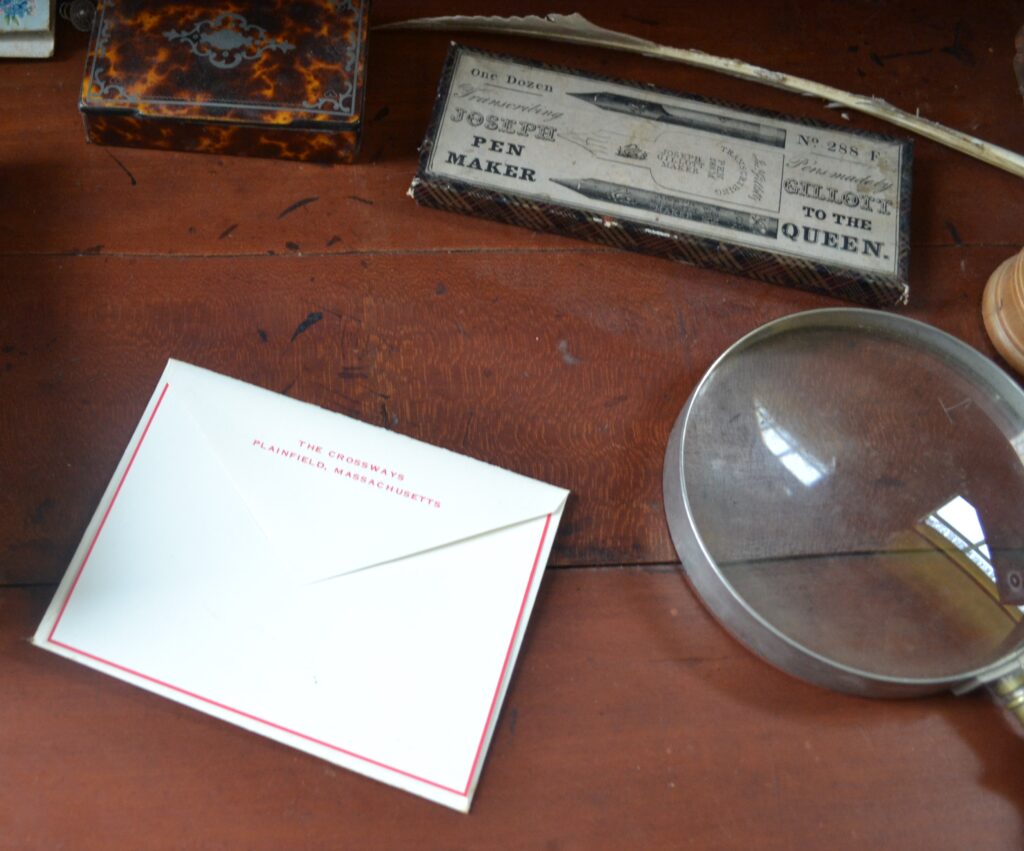
“The Crossroads” letterhead 
Mid-19th century mirror 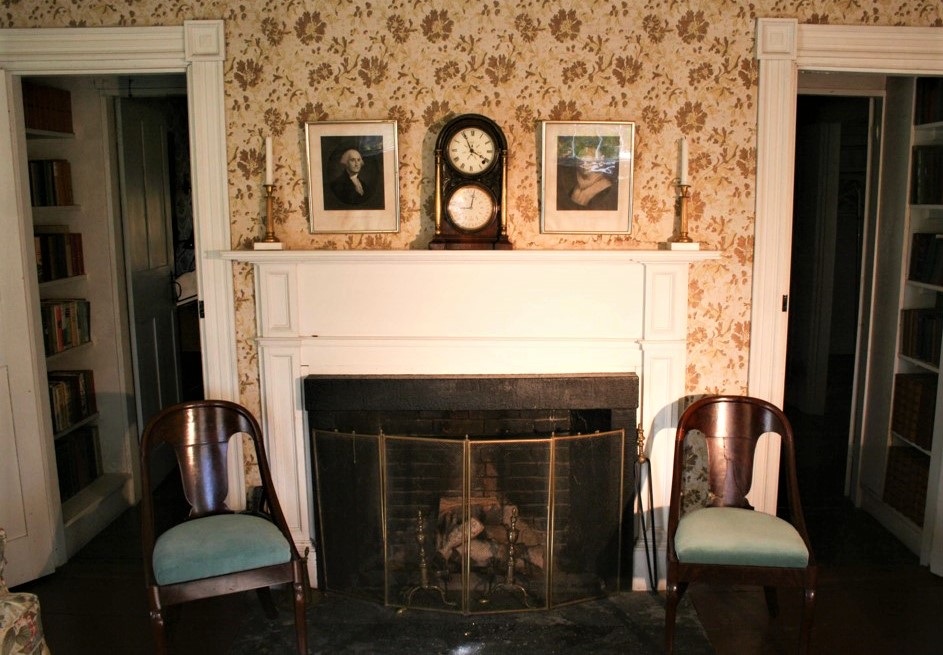
Parlor fireplace 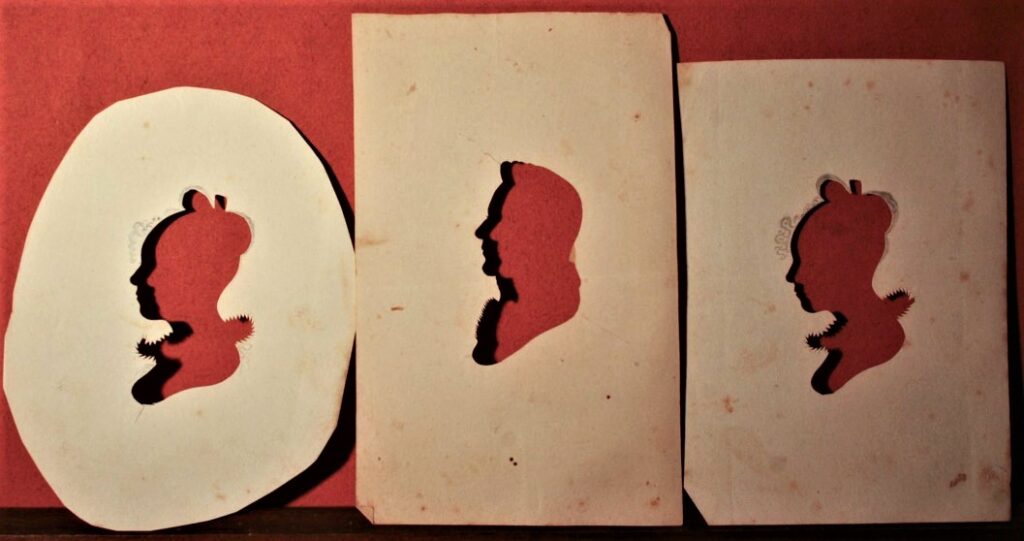
Silhouettes of Shaw family members
